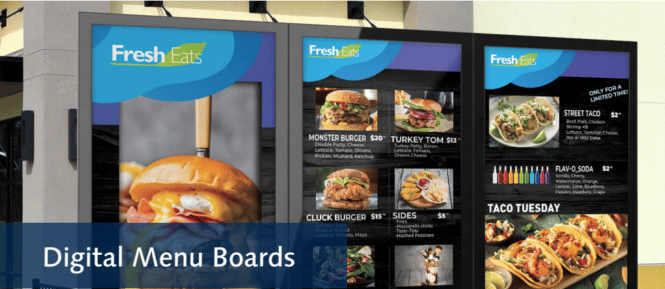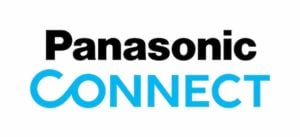
Menu Board Whitepaper
There is a significant shift in restaurant technology that can engage customers in a way that enhances service, reduces wait times, and increases sales. Digital signage is the technology that powers dynamic menu boards and enables cost-effective influential decision-making at preliminary and point-of-purchase touchpoints.
Excerpt
Executive Summary
There is a significant shift in restaurant technology that can engage customers in a way that enhances service, reduces wait times, and increases sales. Digital signage is the technology that powers dynamic menu boards and enables cost-effective influential decision-making at preliminary and point-of-purchase touchpoints.
It can:
- empower restaurants with digital menu boards
- queue management techniques
- streaming entertainment
- and impactful marketing campaigns to increase sales.
This is why 74% of QSRs ranked digital menu boards as a top priority.
Post-pandemic changes in restaurant design, are creating challenges in customer communications in the absence of face-to-face interaction. According to a recent survey conducted by Panasonic, 100% of food service operators found that the COVID-19 pandemic intensified a sense of urgency to adopt transformational technology.
As the foodservice industry experiences challenges with labor and an increase in customer preferences for touchless options, adopting digital technology appears to be even more important. In addition, the evolution of the drive-thru has also underscored the importance of digital signage and customer engagement. Restaurant operators are seeking way to elevate revenues and further enhance the customer experience with digital signage.
The Menu Board
Menu boards have existed for more than forty-five years. The menu boards were initially very simple with copy listing the menu items and their prices printed on a sheet of paper or plastic installed in a lightbox. Some boards were illuminated but no product photography was included. Since restaurants in the 1970s did not offer as many menu items as currently featured, boards were generally smaller in design.
When the need to change items or prices arose, the item insert was removed and replaced with a new strip. Similarly, price chips were updated. Since a menu item was printed on a strip of plastic that slid into tracks, and price chips snapped into place, changes required some dexterity but not altering the entire panel. Static menu boards for drive-thrus also were invented and installed in the 1970s.
The introduction of drive-thru service brought about the addition of outside menu boards and an accompanying communication system. During the next decade, operators learned that photography of menu items increased sales. This led to a space challenge as eateries increased the number of items on the menu and needed room for photos.
These increases in food offerings and photos rendered the board space insufficient. In the 1990s, the introduction of dayparts led to the need for a way to change the content completely to shift from breakfast to lunch to dinner menus. To accommodate daypart changes, meal panels would either be slid over one another at various times of the day or turned around, both manual processes and had to take place regardless of the weather conditions. By the early 2000s menu boards advanced to digital and allowed for video and commercial promotions to emanate from the board without having to go outside. The digitization of menu boards has expanded capabilities while positively impacting revenues, at a cost-effective rate.
Download the Enhancing the Impact of Menu Boards Whitepaper and for more information, and you can always email [email protected]
More Posts
- Drive Thru Digital Signage Solutions by Panasonic(Opens in a new browser tab)
- Panasonic Digital Signage Solution (Complete Solution)(Opens in a new browser tab)
More Posts on Kiosk Industry
- Digital Menu Boards — Panasonic ClearConnect Restaurant Solutions(Opens in a new browser tab)
- Digital Menu Board Technical Considerations – Indoor & Outdoor(Opens in a new browser tab)
- Digital Menu Board – Everything You Wanted to Know(Opens in a new browser tab)
- Digital Menu Boards — Panasonic ClearConnect™ Restaurant Solutions(Opens in a new browser tab)
